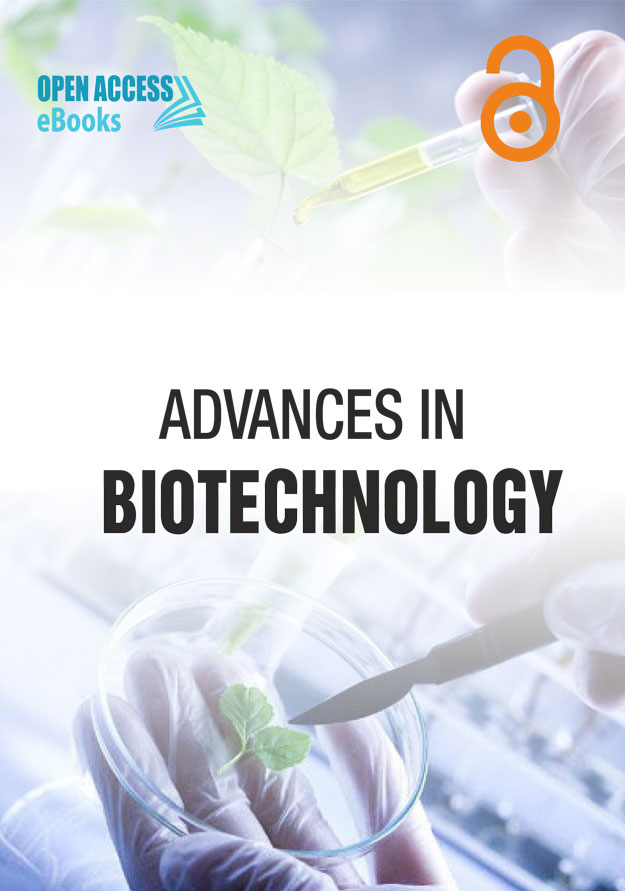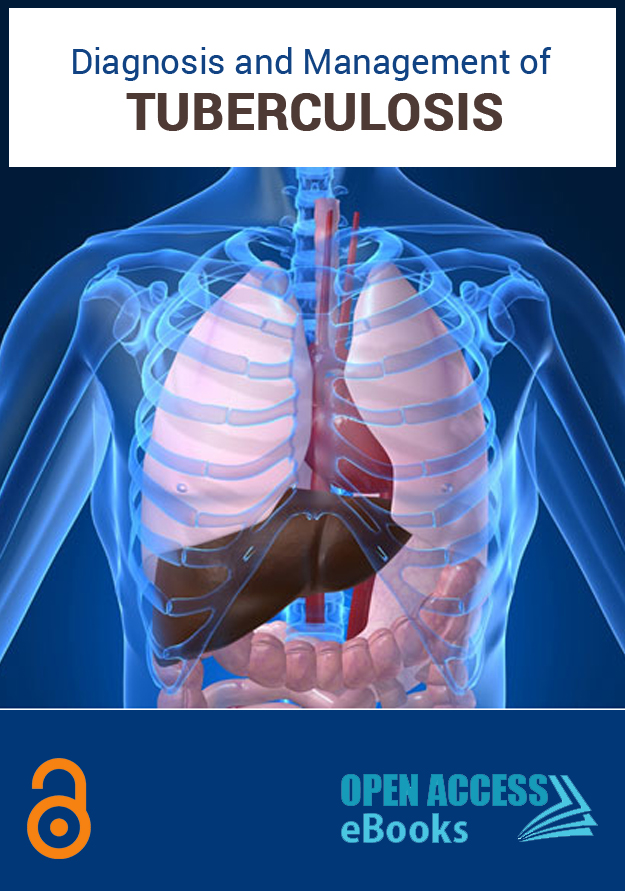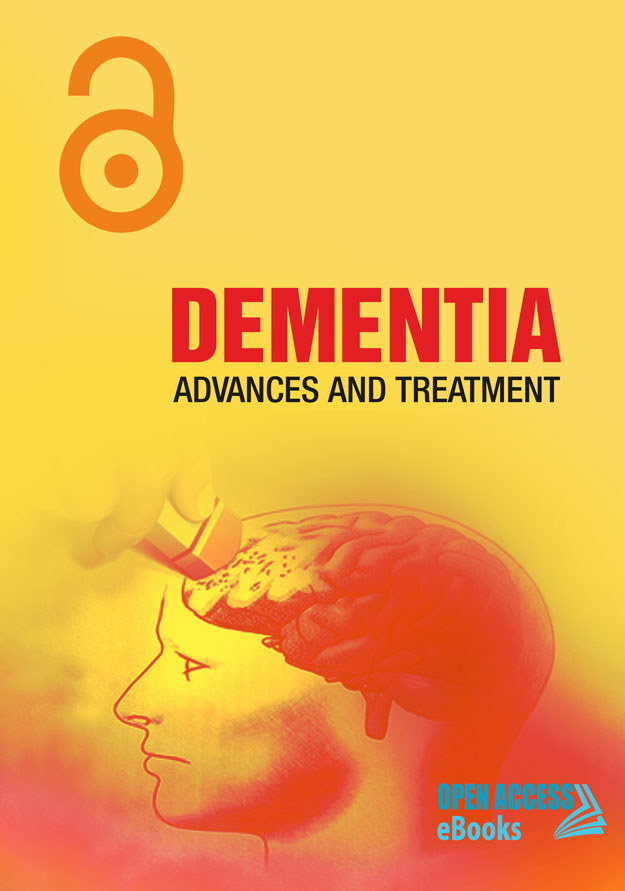Published Chapters:
Advanced glycation end products (AGEs)-mediated diabetic vascular complications
eBook: Advances in Biochemistry & Applications in Medicine
Diabetes mellitus is a group of metabolic disorders leading to defects in insulin secretion and action of insulin or both. Diabetes is caused by a combination of hereditary and environmental factors. In the human body, blood glucose levels are controlled by a complex interaction of multiple chemicals and hormones, including insulin and glucagon. Insulin is a peptide hormone produced in the beta cells of the pancreas that allows blood glucose to enter various cells of the body where it is oxidized to yield energy needed by the muscles and tissues to function [1]. Glucagon is also a peptide hormone, produced by the alpha cells of the pancreas, which causes a rise in the concentration of glucose in the blood. The effect of glucagon is opposite to that of insulin, which lowers the glucose concentration.
Functional Nanocrystals: Towards Biocompatibility, Nontoxicity and Biospecificity
eBook: Advances in Biochemistry & Applications in Medicine
The tunable surface chemistries have dramatically increased by expanding the structural arrangements of nanocrystals with many different strategies. Novel synthesis of functional colloidal nanocrystals has been developed over the past decade enabling the production of highly uniform and stable nanoparticles with important photonic characteristics. In this chapter, we will specifically comment on methodologies used in QDs syntheses that make nanocrystals highly biocompatible with important applications as luminescent probes. In addition, we will also discuss a new category of QDs named magic sized quantum dots (MSQDs), which present intense and broad luminescence rangeand greater size stability, turning them special tools for multiple biological applications in diagnosis, monitoring and therapy.Special emphasis will be placed on,safety, biocompatibility and biospecificity of nanomaterials, which are of great concern as new techniques and novel nanocrystals emerge.
Inborn Errors of Metabolism
eBook: Advances in Biochemistry & Applications in Medicine
Inborn errors of metabolism (IEM) are a group of inherited metabolic disorders leading to enzymatic defects in the human metabolism. As its name implies, inborn errors means birth defects in newborn infants which passed down from familyand affecting metabolism. Hence, it is called Inborn errors of metabolism or inherited metabolic disorders. IEM can appear at birth or later in life such as phenylketonuria, albinism, lactose intolerance, gaucher disease, fabry disease etc. IEM refers a condition where in body’s metabolism is affected due to genetic disorders. The cause of IEM is mutations in a gene that code for an enzyme leading to synthesis of defective enzyme activity or deficiency of an enzyme that affects the normal function of a metabolic pathway. The main indication of IEM is an excess storage or accumulation of specific metabolites in tissues, organs and blood which further manifest to health diseases. In last decades, several hundreds of different IEM have been identified. Most IEM are rare but some are life threatening. Although, most people do not know what inherited metabolic disorders are and may never have heard of them.
Microbial Cellulase and Xylanase: Their Sources and Applications
eBook: Advances in Biochemistry & Applications in Medicine
Cellulose and xylan, the two major constituent of lignocellulose are the most abundant and renewable resource available on earth. Cellulose and xylan are complex substrates and their complete hydrolysis requires a variety of enzymes.Santalum album Cellulases and xylanases are produced by microorganisms, algae, protozoans, crustaceans and insects however, fungal and bacterial bioconversions are economically viable. In the present chapter, remarkable collections of fungi and bacteria have been brought to the limelight that can degrade cellulose and xylan. Mode of action and brief classification of various cellulases and xylanases have been mentioned. Further, insight knowledge on use of cellulases and xylanases for bioremediation and industrial applications were also provided
Recent advancement to target Breast Cancer and Cancer Stem Cells
eBook: Advances in Biochemistry & Applications in Medicine
Breast cancer is the second most prominent reason of cancer death in women after lung cancer, and it accounts for 25.2% of all cancer in women [1]. In the US, approximately about one in eight women (12%) develop invasive breast cancer [2].In 2015, approximately 40,290 US women were expected to die from breast cancer. There was an estimation of 231,840 new cases of invasive breast cancer among US women in 2015 [3]. The chance of breast cancer causes woman’s death is about 3%. Various kinds of therapies such as hormonal, immunotherapeutic agents, surgery and cytotoxic currently are being used to target the breast cancer. The response rate from these treatments comprises 60% to 80% for primary breast cancers and about 50% for metastases [4,5]. However, 20%-70% of patients showed reversion of cancer within five year of time [6]. Recurrence development allied with resistance to therapy and augmented death risk. In patients with primary breast cancer, combining cytotoxic and radiation therapy with anastrozole attained four-year survival rate of 91.6 % [7]. Gene mutations and dysregulation has been identified in breast cancers like the enhanced expression of the heparan sulfate interacting protein, p53 mutations (connecting with high histological grade) and mitochondrial D-loop mutation (allied with lymph node-positive breast carcinoma) [7].
Novel Action of Local Anaesthetics (Literature Review)
eBook: Novel Approaches in Regional Anesthesia & Pain Management
The aim of this article is to review current data of Medline, PubMed and other databases on the effect of local anaesthetics (LAs) with respect to: mechanism of action, effect on postoperative and traumatic ileus, neuroprotection, prevention of cancer recurrence, immune system preserving effect (antiinflammatory and antimicrobial) and novel indications of LAs. Over the last decade scientific studies proved that LAs can interact with other receptors. Besides causing anaesthesia, the LAs may act directly on other receptors and their signaling pathways which are involved in processes of inflammation, platelet activation, nociception, peripheral pain and arrhythmias. Besides reduction in postoperative pain intensity at 6 and 12 h, perioperative use of systemic LAs for abdominal surgery is associated with reduction of opioid dose, length of hospital stay by 4 h, faster recovery of bowel function (peristalsis earlier by 8 h, first flatus by 14 h, less PONV). Several animal studies have proved neuroprotective effect of intravenous lidocaine. It reduces the level of glutamate in the hippocampus and cortex, attenuates apoptosis in the ischaemic area and reduces infarct size, thus improving recovery after hypothermic ischaemia. Long-term effect of anaesthesia/analgesia - reduction of cancer recurrence – was confirmed in several studies (breast, colonic, prostate). LAs reduce surgery-induced immune alterations by reducing production of both pro- and antinflammatory interleukines and also have antimicrobial properties and inhibit different m/o growth in vitro. In conclusion, besides analgesia and antiarrhythmia, local anaesthetics produce faster recovery of bowel function, mobility, reduced hospital stay, have neuroprotective and antimicrobial properties, reduction of inflammation and incidence of cancer recurrence. Further studies regarding safety and determination of optimal dosage are still needed.
Impact of organophosphates and other pesticides on blood parameters of fishes and earthworms
eBook: Studies on Components of Blood and Its Functions
The earthworms and fishes are regarded as most agro-economically valuable organisms in India and around the world. The earth worms living underground can make the soil fertile by two means. First, it can flip the down soil upwards and secondly it can make the soil rich with nitrogen produced from waste products. In India and in other parts of the world, both fresh water and marine fishes are consumed largely. An indiscriminate use of pesticides in agriculture may stall the earthworm population and production of fishes by creating different physiological anomalies either by themselves or by their derivatives, though both of the organisms are non-target to the pesticides. Blood performs almost all important and vital physiological functions due to its circulatory nature. It transports necessary nutrients, gases and waste products throughout the body. Therefore, the present study was designed to explore the impact of various pesticides in modulations of hematological/cellular/metabolic and free radical parameters in blood of earthworms and fishes. We observed significant variations in different hematological parameters of these two organisms upon acute exposure to few organophosphates and other pesticides. These results suggest that the acute exposure of these pesticides can affect the non-target organisms and change the balance of eco-system adversely.
An introduction to blood groups and blood transfusion in domestic animals
eBook: Studies on Components of Blood and Its Functions
Blood groups are decided by genetically influenced, polymorphic, antigenic components of the erythrocyte membrane. Blood group systems in general are independent of each other, and their inheritance conforms to Mendelian dominance.For polymorphic blood groups, an animal usually inherits 1 allele from each parent and thus expresses not more than 2 blood group antigens of a system. An exception being cattle, where multiple alleles or phenogroups are inherited. Normally, an individual does not have antibodies against any of the antigens present on its own red blood cells (RBC) or against other blood groups antigens of that species systems unless they have been induced by transfusion, pregnancy or immunization. The so called naturally occurring isoantibodies in some species (sheep, cattle, horses, pigs, dogs and cats), not induced by transfusion or pregnancy, may be present in variable but detectable titres. For example, cats with Group B essentially have anti-A antibody. With random blood transfusions in dogs, there is a 30-40% chance of sensitization of the recipient, primarily to blood group antigen DEA 1 (DEA stands for Dog Erythrocyte Antigen). ~50% of dogs have a naturally occurring cold hemagglutinin, DEA 7. In horses, transplacental immunization of the mare by an incompatible fetal antigen inherited from the sire may occur. As reported by Susan M. Cotter [1], immunization also may result when some homologous blood products are used as vaccines (e.g., anaplasmosis in cattle.
Breast reconstruction – current practice and future directions
eBook: Recent Studies & Advances in Breast Cancer
Rates of mastectomy are increasing internationally due to phenomena such as contralateral and bilateral prophylactic mastectomies and women eligible for breast conserving surgery opting for mastectomy. Breast reconstruction has been demonstrated to improve psychosocial and quality of life outcomes in this patient cohort, and has become the standard of care in the treatment of breast cancer. With an ever increasing emphasis being placed on this aspect of care, there have been significant advances within the field over recent decades. The development of skin and nipple sparing mastectomy has done much to enhance cosmetic outcomes. Refinement of breast implants to reduce complications and development of free autologous flaps have revolutionised patient outcomes. Results are still heavily influenced by adjuvant breast cancer therapies such as radiation and chemotherapy, and much has been accomplished in making breast reconstruction more compatible with these treatment modalities. However, breast reconstruction is still evolving and novel technologies such as tissue engineering hold promise for the development of superior techniques of breast reconstruction post-mastectomy.
Therapeutic action of curcumin loaded chitosan nanoparticles for cervical cancer
eBook: Current Research & Reviews on Cervical Cancer
Cervical cancer is the second leading cancer in female globally and predominant etiological agent for cervical cancer is human papillomaviruses (HPVs). There is various conventional treatment strategies for the cervical cancer, such as surgery,anticancer drugs and chemoradiotherapy have been improved over a last few decades. However, they remain far from optimal treatment. Recently, cancer research is targeted on improving cancer diagnosis and nanotechnology based treatment methods, which engages the design, preparation, characterization and application on nanoscale drug carrier systems. In medicine, nanotechnologies, such as polymeric nanoparticles, solid lipid nanoparticles, nanostructured lipid (lipid nanaoprticles) carriers, gold & silver nanoparticles, hydrogels, cyclodextrin complexes, and liquid crystals are emerging tools for diagnostic probes and therapeutic devices. The aim of this review is to present a systematic knowledge of nanotechnology-based drug delivery systems for cervical cancer.


